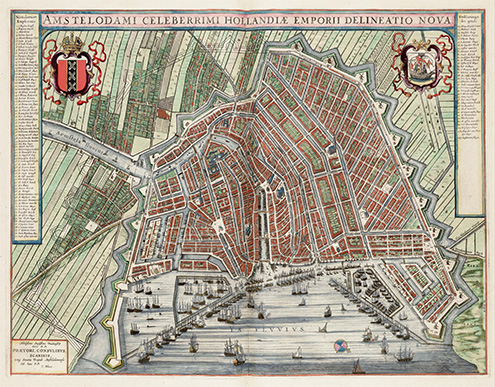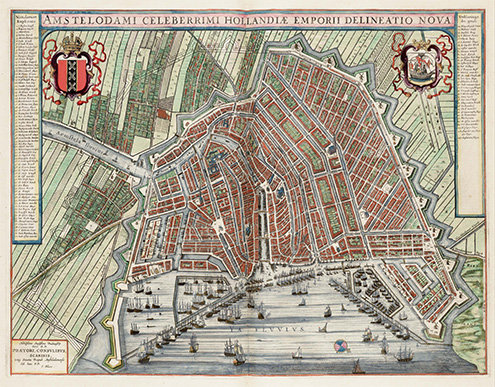Urban institutions put a powerful stamp on the form of the city, and contribute to its transformation as patrons. As such, they constitute essential links for urban historical research. As Esther Gramsbergen has found in her doctoral research, too little attention has been paid to this to date.
For her research, Gramsbergen (b. 1964) analysed three areas in Amsterdam in the period between 1580 and 1880; that is, the period from the Alteratie (Alteration) and the beginning of the Golden Age until the 19th-century expansion of the city. In these areas, administrative, health, trade, cultural and scientific institutions acted as the drivers of spatial development.
The monastic quarter on Nes Street, for example, was expropriated after the Alteratie (the transition from Catholicism to Protestantism), and part of it was transferred to social institutions. The hospital that was established there – later the Binnengasthuis hospital – built houses on the surrounding land. As such, the health-care institution functioned as a kind of property developer. “This provided income for the hospital,” explains Gramsbergen, “but it also resulted in a unique form of construction: the ‘superblock’, which contained one or more courtyards that were accessible to the public.” With its striking courtyards, the Binnengasthuis site – the area around the Oudemanhuispoort – has remained a lively area of the city centre to this day. The University of Amsterdam (UvA) was established there at the end of the nineteenth century, next to the hospital.
A similar kind of development took place around Dam Square. The commodity exchange that the city architect Hendrick de Keyser built there in 1611 in the bed of the River Amstel completely changed the orientation of the stately houses. The backs of the houses became the fronts, transforming Dam Square and the Rokin Canal into lively, representative public spaces.
In the Plantage, cultural and scientific institutions played a leading role. The great drivers in this neighbourhood were the Botanical Gardens, the Artis zoo and the University of Amsterdam. The area became the cultural hotspot of Amsterdam. Gramsbergen argues for both conservation and renewal: a monument without a function lacks the impact of a fully operational institution.
The research project, entitled “Shaping the city of Amsterdam. The influence of urban institutions on spatial transformation, 1580-1880”, focuses in particular on the mechanisms underlying the development and spread of urban institutions. The role of areas lying on the edge of cities (the so-called “fringe belts”) and the mechanisms that attract and repel functions play an important role in her urban analysis.
It is still important to reflect on the role of urban institutions and their place in the city: “Public institutions can have a good impact on the urban habitat.”

Published: December 2014
More information
- Research 'Kwartiermakers in Amsterdam: Ruimtelijke transformatie onder invloed van stedelijke instellingen, 1580-1880' (Dutch only)
